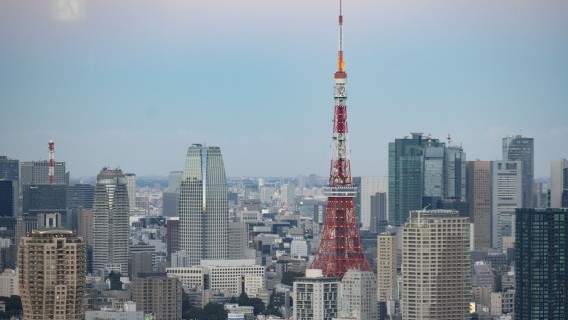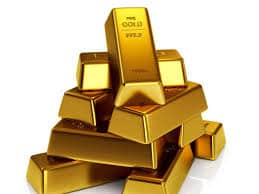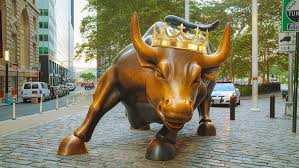Resume af teksten:
En netop annonceret handelsaftale mellem USA og Japan har sendt aktiemarkedet op, med Nikkei-indekset stigende 3,5% i morgenhandlen. Aftalen indeholder en 15% gensidig told på japanske varer og investeringer i USA, men det har fået japanske statsobligationer til at falde på grund af usikkerheder om politik og økonomi, især med rygter om, at premierminister Shigeru Ishiba vil træde tilbage snart. På trods af den positive reaktion blandt bilforhandlere, der undgår volumenbegrænsninger, forbliver en højere told på stål og aluminium. Økonomiske bekymringer kan udfordre forhandlingerne, især da USA ønsker flere aftaler med asiatiske eksportører inden august. Usikkerheder i den japanske regering kan påvirke obligationsmarkedet negativt. Japans vicecentralbankdirektør Shinichi Uchida nævnte, at en renteforhøjelse sandsynligvis vil ske i oktober, men politisk og økonomisk usikkerhed kan forsinke beslutningen. Yen’en kan opleve depreciering, inden USA sænker renterne.
Fra ING:
News of a US-Japan trade deal, though details remain vague, sent equities higher, with the Nikkei rising 3.5% during the morning session. However, the USDJPY and Japanese government bonds declined as fiscal concerns and reports of Prime Minister Shigeru Ishiba stepping down soon

Reciprocal tariffs on Japanese goods
Lower than the earlier announced 25%
What Trump said about the deal
President Trump said Japan will receive a 15% reciprocal tariff and invest $550 billion in the US. The announcement, made on his Truth Social platform, suggests Japan will open up sectors including cars, trucks, rice and other agricultural markets. Later, at a White House event, Trump added that there will be a joint venture with Japan in LNG project in Alaska, with most of the benefits remaining in the US
What Ishiba said about the deal
Japanese Prime Minister Ishiba offered more details about the deal. He confirmed that Japan will face 15% tariffs, including on autos, and won’t be disadvantaged from any tariffs on chips. However, the 50% tariff on steel and aluminum will remain for the time being. Ishiba denied that Japan agreed to lowering import tariffs, which he claimed weren’t included in the agreement. The agreed-upon $550 billion US investment will be backed by loans from government-related organisations.
Tentative relief is clear for major car exporters
Although the specifics remain unclear, both parties called the pact deal a success. Trump appears to view it as a massive deal, while Ishiba characterised it in less grandiose terms. Ishiba pointed out that among countries with a trade surplus with the United States, Japan negotiated the lowest tariff rate. Furthermore, for automobile exports, Japan secured a 15% tariff without any volume restrictions, in contrast to the UK’s arrangement. Regarding the politically sensitive matter of agricultural products, Ishiba stated that, while Japan will increase US rice imports within the existing quota, it won’t compromise the domestic agricultural market.
The trade deal largely aligns with our initial forecasts. It’s expected that Japan will increase direct investment in the US, such as LNG projects in Alaska, and boost imports of US goods, including agricultural products. But, the implementation of a 15% tax on cars without a limit is a surprise. Ongoing uncertainty regarding Japanese politics — including reports Ishiba will stepping down soon — and the exclusion of defence spending from the agreement may introduce complexities to the negotiation process.
We think that the US aims to finalise the deal before August and encourage other trading partners to participate in negotiations. Including defence spending in the discussions could potentially extend the timeline for reaching an agreement. The US-Japan deal will put more pressure on other major Asia exporters to secure better deal. We’ve already seen trade deals with the Philippines and Indonesia. Before 1 August, there should be more deal struck with Asian exporters.
Bond market slumped reflecting the concerns over fiscal conditions
A highly-anticipated 40-year Japanese government bond (JGB) auction on Wednesday was weak. The bid-cover ratio fell to 2.13 compared to the 12-month average of 2.48, the weakest since 2011. The government sold the 40-year JGB with 3.1% coupon. Market sentiment was already weak as the ruling Liberal Democratic Party (LDP) lost the Upper House Election on Sunday. Ishba said he’s quitting as soon as this month. Despite the trade deal between the US and Japan, bond investors showed concerns over political uncertainty in Tokyo and additional burdens on the nation’s fiscal position.
Meanwhile, the deputy Bank of Japan governor, Shinichi Uchida, indicated that the BoJ isn’t in a hurry to resume raising interest rates. He reaffirmed the BoJ’s stance that if the economic outlook is realized, the BoJ will continue to adjust the policy rate accordingly. He noted downside risks to the economy and prices, but also that upward wage growth is likely to continue given businesses’ changing price-setting behaviour. We believe that the BoJ will need more time to understand the details of the trade deal and how it affects the economy. It’s a close call, but an October rate hike remains likely in our view as US trade uncertainty eases and inflationary pressures grow. But it’s possible the BoJ to push back its rate hike towards the end of the year.
A dovish BoJ and the large investments in the US will probably weigh on the JPY. We still believe that once the Fed begins to cut its rates and the BoJ hikes, conditions will turn to favourable for the USDJPY. In the short term, though, JPY should experience depreciation pressures.
Hurtige nyheder er stadig i beta-fasen, og fejl kan derfor forekomme.



